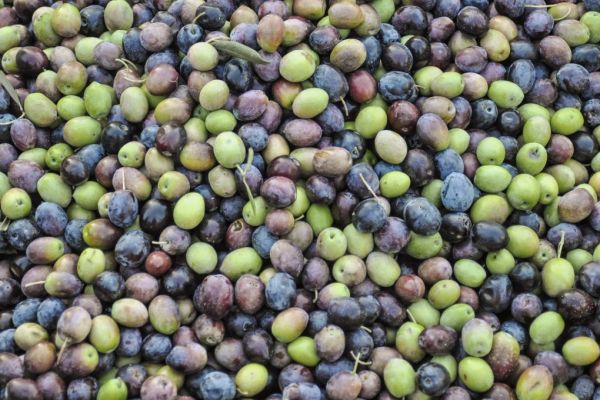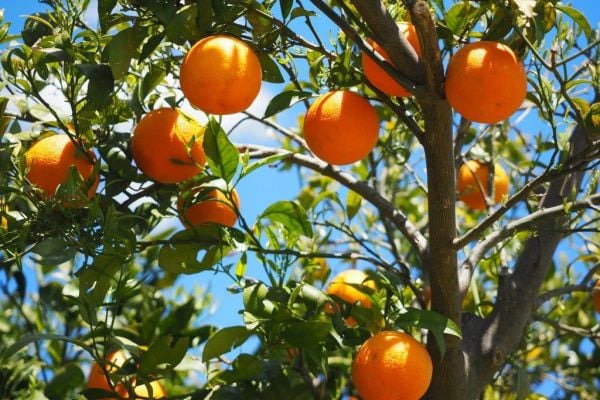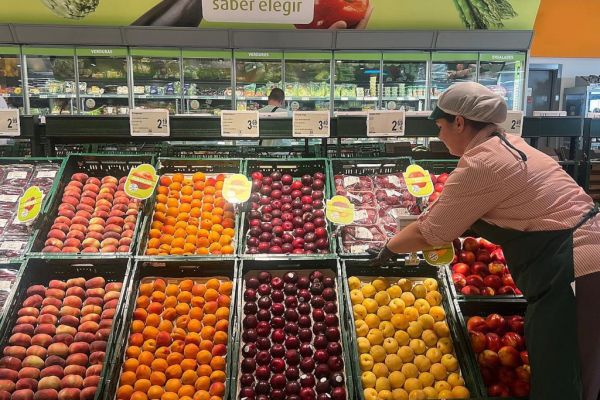In this edition of Buyer's Brief, Nick Peksa examines the health of the table olives and olive oil sector amidst widespread changes in weather conditions across Europe. This article first appeared in ESM’s January/February 2023 edition.
Readers based in Europe may not be aware of Burns Night, when many households in Scotland celebrate one of the world’s greatest poets: Robert Burns.
On 25 January, families get together and remember the works of this medieval storyteller over a glass of wine and a hearty meal. Many of his works were inspired by his visits to the rugged highlands of Scotland. In 1787, one such trip – to Loch Ness – brought him face to face with the Falls of Foyers. Burns was so impressed with the sight that he whipped out his pencil and penned some lines on the spot.
On a personal level, two years ago, his words inspired a family visit to the falls. Expecting a raging torrent of water roaring down the rocky mountain, we excitedly walked down 300 steps to marvel at the view. The experience was massively underwhelming. The raging torrent that Burns experienced was replaced by a piddle of water trickling serenely down a rock face. Could the climate really have changed that much in the last two and half centuries?
Rising average global temperatures are associated with widespread changes in weather patterns. The dates of planting and harvesting crops appear to be moving, and rainfall patterns are changing. Scientific studies suggest that extreme weather events, such as heatwaves and large storms, are likely to become more frequent or intense with climate change.
The 2022/23 olive season appears to be a recipient of these changes.
2022/23 Olive Oil Production
European olives thrive in a Mediterranean climate. Olive trees enjoy warm weather and plenty of water, but excess heat can be devastating. As two thirds of global production originates from three main regions – Jaén (Spain), Bari (Italy) and Chania (Greece) – these countries, combined, set world prices.
Drought conditions and high temperatures across the southern and western Mediterranean regions hindered the vegetative development of the olive trees and significantly reduced the accumulation of oil in the fruits.
These low yields have affected Europe’s output and, consequently, reduced production in the region by around 34%. Production by the world’s largest producer, Spain, experienced a massive decrease in volume (-48%), with Italy and Portugal down by 29% and 39%, respectively.
Global production of olive oil normally weighs in at around 3.3 million tonnes. Because of a poor performance in Europe, this year’s output will fall well short of this figure and top out at 2.65 million tonnes – a significant decrease. This signifies a global reduction in the volume of olive oil produced (-23%) – down by a fifth on the five-year average.
Effect On Pricing
Olive oil prices have been increasing across all major regions. It has been indicated that shortages of olive oil are expected in 2023, following the further deterioration of an already negative outlook for the European olive harvest.
Prices for EU extra-virgin olive oil have already increased by 50%. It’s not just supply that is affecting the market price of olive oil – input costs (fuel, labour and fertiliser) have also increased, on average, by 23%, and this will add further pressure to already high prices.
As supply remains tight, prices will increase. Europe does hold some inventories of olive oil, however, these stocks are 44% lower than in an average year. If demand were to pick up, olive oil supplies would simply run out.
Fortunately for the market, global consumption is down by 4%, primarily driven by EU consumers buying less, on the back of extremely high retail prices.
Eastern Mediterranean
The eastern end of the Mediterranean Basin has certainly been faring much better. The region avoided the unfavourable dry and hot weather that plagued large parts of Western and Southern Europe in the summer. The year 2022 saw a fruitful harvest in countries like Greece, Tunisia, Türkiye and Israel.
Depending on the final oil yield calculations, it is highly likely that Italy will be displaced from its position as the world’s second-largest producer of olive oil and forced into fourth place by increased output from Greece and Türkiye.
Greece, with excellent growing conditions, is expected to increase its olive oil yields significantly. Output is expected to increase by 51%, year on year, and its 350,000 tonnes will see it overtake Italy with regards to EU production.
Initial estimates for the current crop year also suggest that Turkish olives will have a higher yield of oil, compared to the 228,000 tonnes produced in 2021/22 (79% higher). Türkiye, based on its official yield forecasts, is projecting the olive oil crop to exceed 400,000 tonnes this year – a record high.
Elsewhere, Israel is also expecting a record year for both table olives and olive oil. The harvest, though delayed, is looking to exceed expectations for both quality and quantity. After having experienced low yields for two seasons, this season’s yield is very high.
Ending Thoughts
In 2023, when considering a sourcing strategy, it is worth investigating olive oil from Türkiye and Greece. Turkish and Greek producers and exporters may be in a position to fill the gap in international markets created by the poor harvest in Spain and Italy.
In case you were wondering, slàinte mhath means ‘good health’ in both Irish and Scots Gaelic. We will have to wait and see what happens to the health of olives in 2023/24. Are these new climatic conditions permanent, or just a one-off – or, to put it another way, could I have just picked a bad year to visit the Falls of Foyers? We will have to visit again to find out.
For more information, contact [email protected].
© 2022 European Supermarket Magazine – your source for the latest supply chain news. Article by Branislav Pekic. Click subscribe to sign up to ESM: European Supermarket Magazine.














